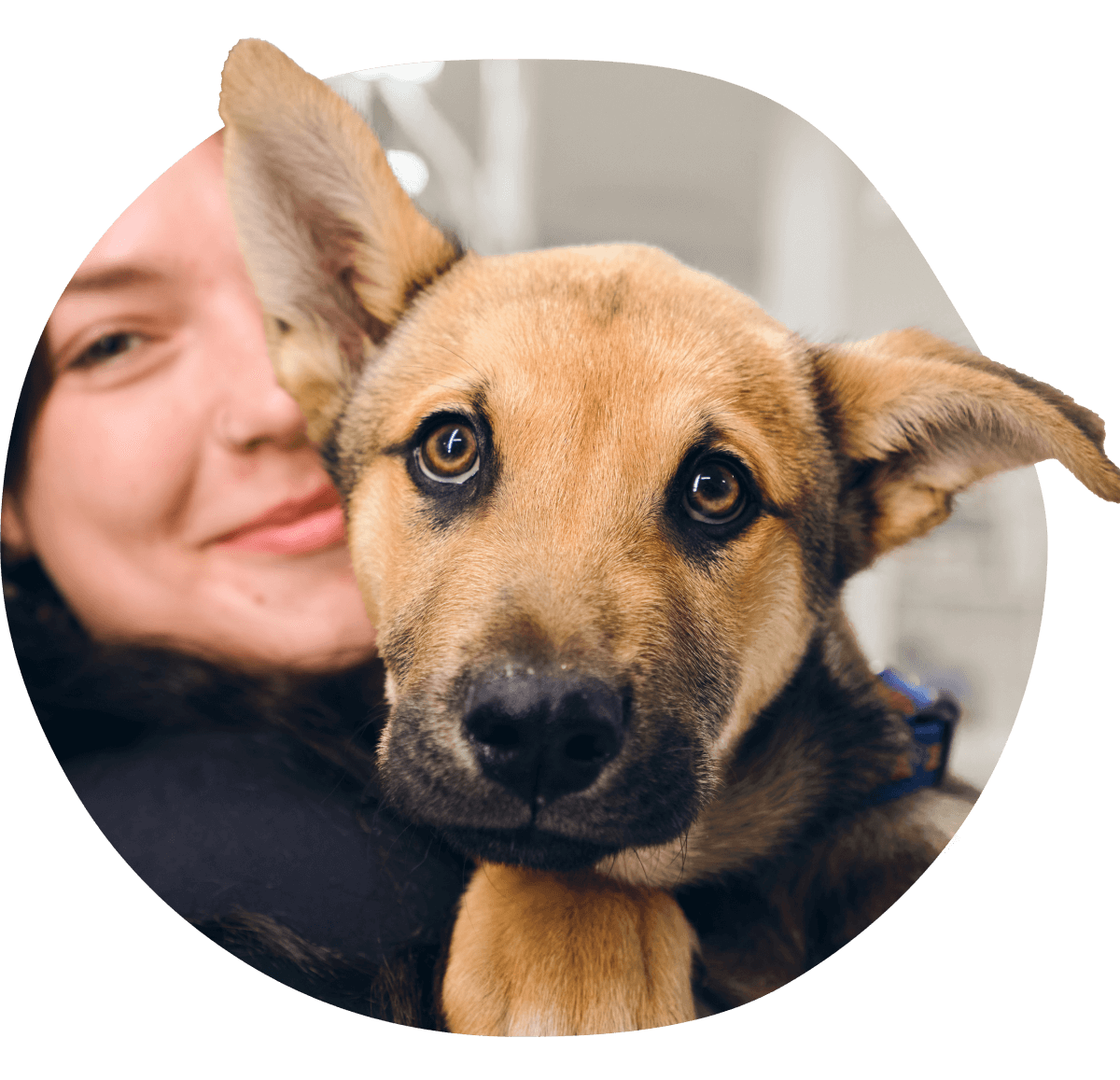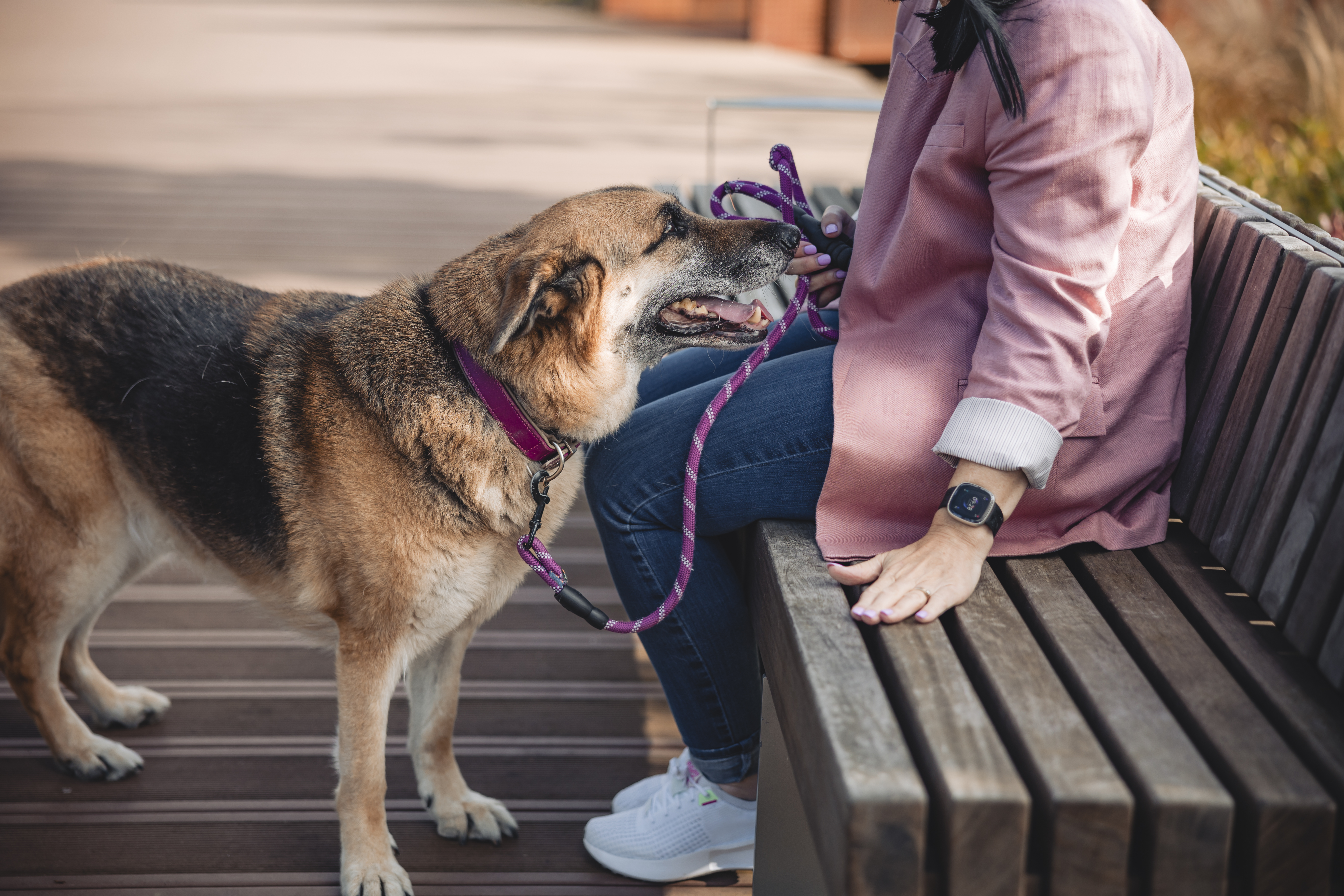Did you know that the skin is a major organ of the body and a good indicator of health?

If your dog becomes uncomfortable, itchy or sore, it can be a stressful time for both you and your pet. The trouble is that there is a huge array of different skin conditions that can all cause similar signs. So, what could be bothering them?
We've put together a guide to skin conditions to help you understand what might be troubling your dog, and when to look for help from your vet.
Healthy skin
Your dog’s skin acts as a protective barrier to the outside world. It is designed to keep harmful intruders out, such as bacteria and yeast. The skin is also responsible for many other functions, including temperature regulation and stopping body fluids escaping.
Let’s dive a little deeper.
Healthy skin is divided into three layers:
The epidermis (outermost layer) – this is the part we can see. It is covered in specialised cells called keratinocytes, which give it a protective surface that is constantly shed and renewed.
The dermis (middle layer) – important structures like hair follicles and sebaceous (oil) glands are found in the dermis. These then exit up through the epidermis to the skin surface. The sebaceous glands secrete an oily substance known as sebum, which keeps your pet’s skin soft and flexible, adding extra protection to the body. Blood vessels are also found in the dermis.
The subcutis or hypodermis (innermost layer) – in this layer you will find fat and muscle. This subcutaneous fat is important for insulation and shock absorption, as well as being an energy reserve.
Good skin and coat condition is important, and not only because it will help your dog look their best! But also because of the role they play in keeping your dog well.
As a complex organ, the skin hosts a delicate balance between individual factors such as your dog’s immune response (defence mechanisms) and their skin barrier, and the local microorganisms that naturally live on your dog’s skin.
If the skin becomes damaged, this balance is disturbed and normal skin microorganisms, such as bacteria and yeast, and even harmful pathogens (disease-causing microorganisms) can start to multiply and lead to skin problems.
Damage to the skin can occur from cuts and scrapes, excessive scratching or licking, and also because of underlying health issues like allergies, hormonal disease, or autoimmune conditions.

Common canine skin conditions
As there can be a lot of similarities between different skin conditions, we would always recommend that you and your dog visit the vet for an accurate diagnosis.
In the meantime, let’s take a look at some of the most commonly seen skin conditions in dogs, as well as what might cause them in the first place. Hopefully this information will give you confidence when chatting things through with your vet.
Parasites
Parasites are a very common cause of skin disease in dogs, with fleas being the most common culprits. We know that creepy crawlies can be quite unpleasant to think about, but it’s important to understand the effects they can have on your pet’s skin. Thankfully, regular use of an anti-parasite product (for example, Simparica Trio®) can prevent these problems from arising in the first place.
Fleas
These small brown wingless creatures will rapidly reproduce on your pet.
Their eggs fall off into your household, hatching out into tiny larvae. These will crawl into your carpet or gaps between floorboards, eating debris. They will then form cocoons called pupae which can sit undisturbed for several weeks before hatching out as adult fleas.
This whole process is known as the flea life cycle, which your vet can discuss with you further. But, as you can see, treating the environment, as well as your pet, is key to help you reduce flea numbers faster and get on top of the problem.
Signs of fleas – Dogs with fleas will often be itchy but may also have scabs and areas of fur loss due to nibbling and scratching. They can be extremely itchy if your dog is allergic to flea saliva, known as flea allergy dermatitis. You may also see specks of black/brown flea dirt in your pet’s coat as well as the fleas themselves. It is important to remember that you may not see live fleas on your pet. Because only small amounts of flea saliva can set off the allergic response, it is very common that flea allergic pets have very few fleas on them. This is why your veterinarian may recommend appropriate flea prevention, even if fleas cannot be seen.
Mites
Microscopic mites cause a skin condition known as mange.
The most common types of mange are sarcoptic mange and demodectic mange.
Dogs naturally carry low levels of the Demodex mite, and it doesn’t usually cause a problem, but in young or debilitated dogs (immune system not working well), their numbers can multiply, leading to disease. The Sarcoptes mite, however, is infectious and can be spread through contact with infected animals to both your pets and you!
Signs of Mites – Demodex typically causes areas of non-itchy hair loss. However, Sarcoptes mites burrow in the skin, causing widespread intense itchiness, crusting and hair loss.
Skin allergies, especially atopic dermatitis, are extremely common in dogs and are often the cause of skin and ear problems that keep coming back.
Skin allergies
Allergic dermatitis is commonly associated with environmental triggers like grass, pollens and house dust mites.
As the name suggests, flea allergic dermatitis is due to an allergic reaction to fleas’ saliva. Allergies to ingredients in food - like beef, chicken or wheat - are another possible cause of itchy skin, but actually aren't that common.
It is not possible to prevent allergies from developing. Some breeds seem more prone than others and genetics are known to be a factor. If your dog suffers from allergies, they will likely need life-long management. Fortunately, with the right treatment, your dog can lead a happy, comfortable life.
Signs of Skin Allergies – Common signs include increased itchiness and repeat skin and ear infections. Your dog may have sores, scabs and inflamed skin. Dogs might also lick their paws to excess, leaving saliva staining on the fur. This makes their paws look pinky-brown in colour. If skin allergies are left untreated, your pet may develop changes in their skin’s colour and thickness. Affected dogs will often be seen scratching, nibbling and licking multiple times during the day and at night.
Skin infections
When the skin barrier is compromised, normal skin microorganisms can start to multiply. Certain yeasts and bacteria are common causes of itchy skin infections in dogs. They live on the skin of healthy dogs at low levels, but when the skin is damaged, can multiply to problematic levels.
Managing any underlying skin issues will help to keep yeast and bacterial infections under control. Regularly cleaning and drying between skin folds will also help to prevent them from developing in these problem areas.
Signs of skin infections – Dogs with skin infections usually have a funny smell and may have a greasy coat or crusts and scabs on their skin. The skin can be inflamed (reddened) and is usually very itchy.
Less common skin conditions
Hormonal issues (endocrine disease)
Skin changes are common in dogs that have hormonal issues. Hypothyroidism (decreased thyroid hormone) causes thinning of the fur, as well as weight gain and lethargy. Affected dogs usually have hair loss down both sides of their body known as flank alopecia. They are also prone to skin infections (pyoderma).
Hyperadrenocorticism (Cushing’s disease) is another hormonal issue, where the body is over-producing steroid hormones. This can be caused by a small tumour on the adrenal gland or in the brain. Thinning of the skin, hair loss and pigment changes are usually noticed. Many owners report an increase in their dog’s thirst, appetite and urine production too.
Signs of hormonal issues - Skin and coat changes in animals with endocrine disease are typically not itchy (unless they have secondary infections). Hair loss or thinning in these dogs tends to be symmetrical in appearance and dogs will show other symptoms beyond the skin.
Autoimmune conditions
When a dog has an autoimmune disease, it means that their immune system has gone into overdrive and has started attacking healthy cells in the body. There are a few different causes of autoimmune skin problems in dogs, including Pemphigus Foliaceus and Discoid Lupus Erythematosus (DLE). We don’t always know what leads to this exaggerated immune reaction, but in some dogs, autoimmune disease can be triggered by sun exposure or certain medications.
Signs of autoimmune disease – These include sores, scabs, skin thickening, hair loss, painful blisters and ulcers (skin wounds). Secondary infections are common.
Cancer
We understand that many pet owners become frightened when they hear the word cancer. But skin cancer in dogs can often be treated if detected early enough.
Examples include mast cell tumours, malignant melanoma and squamous cell carcinoma.
Your vet will need to perform further tests to give you a diagnosis, as many skin lumps can look the same. When it comes to skin cancer, it may not even look like a lump, it sometimes looks like a wound that doesn’t heal.
This will also allow your vet to identify the best treatment plan, which may involve surgery, with or without chemotherapy and radiotherapy.
Some skin cancers are linked to sun exposure (UV radiation). Dogs that have no fur, thin fur or white fur can have pet-safe sun lotion applied to protect them, especially on sensitive areas, such as the nose, ear tips and hairless areas, particularly any areas where the skin is pink and exposed. You should also consider stopping them from sunbathing during the warmer months.
Signs of skin cancer – A lump or swelling in the skin, changes in skin colour, inflamed areas of skin and wounds that don’t heal can all be signs of skin cancer in your pet. It is important to have these checked by your veterinarian.

What should I do if my dog has a skin condition?
It can be distressing to see your canine companion losing their hair, or becoming so itchy that they are uncomfortable. Luckily your vet is on hand to help, so make sure to get your dog booked in for an examination. Your vet will need to perform a few tests to diagnose the specific problem in your dog.
Many skin complaints can appear similar to the untrained eye, so getting a professional to diagnose your dog is essential. They can then prescribe safe and effective medications to help manage the problem.
How are dog skin conditions treated?
Due to the wide array of different skin conditions in dogs, there is also a wide array of different treatment options! Your vet will help you find what works best for your dog.
Depending on the diagnosis, your pet may need one or more of the following for their skin complaint:
- Topical treatment - medicated shampoo, ear drops, wipes or cream can help with fungal and bacterial infections, as well as calm inflamed skin.
- Antibiotics – oral antibiotics may be needed to resolve deeper bacterial infections and should always be administered according to your vet’s recommendations.
- Anti-itch medication – There are a range of effective medications that can stop your dog's itch and get them comfortable again.
- Anti-parasite treatment - all dogs with a history of skin issues should receive regular anti-parasite treatment to prevent fleas, mites and other nasty parasites.
- Changes in diet – providing a better-quality diet or supplementing your pet with omega-3 fatty acids can help in some cases. Alternatively, your dog may require a strict hypoallergenic or novel protein diet if they are diagnosed with food allergies.
- Management of underlying health conditions – animals with autoimmune disease, hypothyroidism and Cushing’s disease will require treatment to improve skin conditions. This treatment is likely to be life-long.
- Surgery – Some conditions like cancer or chronic ear infections may need to be treated through surgery.
Skin health is extremely important for your dog's well-being. If your dog doesn't seem right, you should get them checked by your vet. Many skin conditions can look the same, so it is important to get a proper diagnosis.
Sadly, some owners leave things too long before getting advice, which can make problems harder to diagnose and treat. Your vet is there to work out the best course of action for you and your pet, so don’t be afraid to seek help.
Explore more on these topics
Select a country and language
Regulatory constraints and medical practices vary from location to location. Consequently, the information provided on the site in which you enter may not be suitable for use at your location.
Asia Pacific
Europe















Latin America







North America
You're visiting the ZP
What would you like to do?









